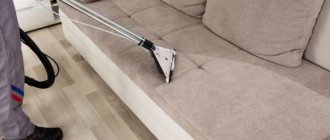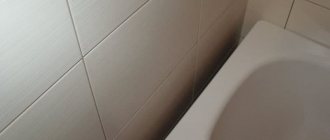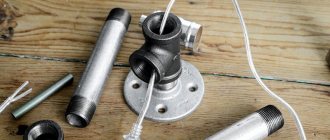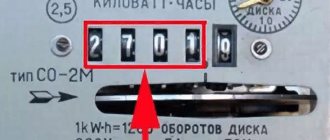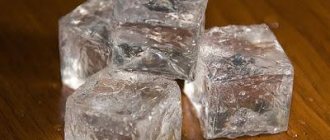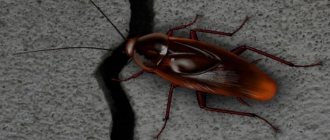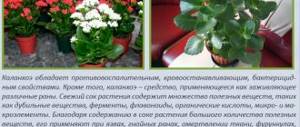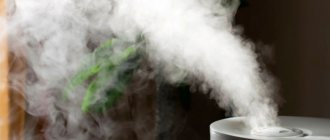Tiled surfaces are most often found in the kitchen and bathrooms. Tiles are often used in areas where water is most likely to enter the wall. It can also be found in the kitchen sink area and in bathtub installation areas. This is where dirty drops often get onto the wall surface. The tile is not afraid of such influences and can subsequently be easily wiped off with a damp sponge.
However, modern technology for surface cladding involves the use of decorative joints between tiles. Under different conditions, these seams can have a thickness of 1 to 5 mm. They are distinguished by a different quality. The solution that forms the basis of the grout has a rough structure, which over time accumulates dust deposits, which contributes to the darkening of the joints. Cleaning such surfaces has specific features. In this article we will tell you how to clean the grout between tiles in a bathtub.
Causes of darkening of seams
To fill correction joints between facing tiles, today special decorative grouts are used, which are made on the basis of white cement. The required grout color is achieved by using different shades of color. The result is ready-made mixtures of a wide variety of colors and shades. However, their cement base, which is highly durable, is not capable of creating glossy surfaces, which does not make it easy to clean the joints between the tiles in the bathtub.
The external structure of this surface acquires a rough character, reminiscent of the front side of fine sandpaper. When moisture gets on such a surface, there is a possibility of dust settling, which accumulates over time. Moreover, the abrasive surface of the seam cannot be wiped off with a sponge or rag, so few people know how to clean the seams between the tiles in the bathtub.
Regular exposure to steam and high humidity creates a favorable habitat for various fungi and mold. This fact completely distorts the decorative appearance of the seams, and in other cases causes an unpleasant odor, forcing you to decide how to clean the seams between the tiles in the bathtub.
How to clean tile joints using folk remedies
Soda
In case of severe contamination between tiles, proceed as follows:
- The surface of the tile is moistened.
- Apply bleaching soda with a sponge.
- Use a soft brush or the same sponge to wipe the surface until the dirt is completely removed.
At the same time, you do not need to overdo it with force, since pressing hard can cause cracks in the tiles.
Chlorine
How to whiten the seams between tiles?
I clean with regular chlorine and a toothbrush. How to whiten the grout between tiles? Chlorine is used to give white grout a shiny color. Bleaching joints between tiles with a chlorine solution is carried out as follows:
- Make a water solution of bleach.
- Apply it with a spray bottle.
- After 5-6 minutes, remove with a damp cloth.
It is worth remembering that chlorine has an unpleasant odor, but it is able to ensure the complete destruction of fungal formations and prevent the occurrence of mold.
Acetic acid
In order to remove stubborn stains between tiles, you can use acetic acid.
- Vinegar is applied using a spray bottle.
- Using a brush, it is distributed over the entire joint surface.
- After 5-6 minutes it is removed with a damp cloth.
Acetic acid should be diluted in the following proportion: add 1.5 tbsp to 500 ml of water. spoons of vinegar. The use of vinegar solution is more desirable than chlorine, since it is less harmful to human skin and is also a more gentle cleaning method.
Lemon acid
There is another folk recipe - citric acid, which is used as follows:
- Take a sponge moistened with water.
- Lightly squeeze and dip in citric acid.
- Rub the surface with the resulting mixture.
- After 3-4 minutes, the solution should be washed off with a damp cloth.
Cleaning the joints between tiles does not depend in any way on the width of the gap. In this case, it is advisable to first test more gentle methods, and after each product used, you need to completely wash out and wipe the seam dry.
To clean seams, do not use aggressive bleaches or hard-bristled brushes.
For heavily contaminated areas, you can use a combination of the above-described available means from the kitchen mezzanine:
- water – 3 glasses;
- soda – 0.25 cups;
- vinegar – 0.15;
- citric acid – 0.15.
The resulting cleaning agent is very aggressive, so you need to protect your hands with rubber gloves. Clean the seams with a brush or sponge. Effective cleaning is possible if you wait about 10 minutes and then rinse off the composition.
Methods for cleaning old tile joints
In the modern world, household chemical departments offer a wide variety of detergents and disinfectants applicable to any life situation. To clean correction joints between facing tiles, you can also select a suitable composition. To do this, it is necessary to make a choice depending on the condition of the seams.
For initial darkening, it is enough to use a detergent containing a small amount of soda or chlorine. In case of mold formation, it is necessary to resort to antibacterial agents. This is exactly the best way to clean the joints between the tiles in the bathtub under the current circumstances.
Special products for cleaning seams
There are quite a few detergents designed specifically for cleaning tile joints in wet areas. They contain a number of surfactants and biocides designed specifically to remove particularly stubborn stains, dark deposits and mold spores.
Experienced housewives, if desired, can list about ten different names of such products, for example, Silit Bang, Vexa, and so on. The instructions for cleaning bathroom grout using these means are quite simple:
- Using a sponge, thoroughly moisten the tile joints with clean water;
- Apply the cleaning composition in excess to the surface of the seams, without skipping any areas;
- Wait a few minutes (up to 10) until the components of the product dissolve the contaminants;
- Wash all areas well with running water.
Normal cleaning
If the grout of the correction joints begins to fade over time or stains from grease or used detergents have formed on it, then you can use any available detergent and a hard rag. It is better that the product used for this purpose has the ability to dissolve fats with limescale. How to clean the grout between tiles in the bathroom? Specific compositions Fairy or CIF can cope perfectly with the task; AOS or Silit are also perfect. If it is not possible to use these products, you can try others with similar characteristics.
Bactericidal treatment
How to clean the seams between tiles in the bathroom if black mold or fungal growths appear on the seams between the tiles? You should use products containing chlorine. An example of such products would be the well-known Domestos or ordinary whiteness; the difference will only be in the smell released during processing. The specified product must be rubbed over the surface of the damaged seams and held for 5-10 minutes, and then rinsed with water. How to clean the grout between tiles in the bathroom? In such situations, special tools designed for working with seams are also used. Among the most famous representatives of this group are Ultra-Stripper, as well as the no less famous analogue BOZO.
Treated seams do not always regain their original appearance. For this reason, after removing mold, it is recommended to clean the seams with wet sandpaper intended for finishing. As a result, they will acquire not only a fresh look, but also a completely smooth surface. Upon completion of stripping, it is best to finish the procedure by treating with a special liquid designed for long-term protection of seams, called Atlas Dolphin. It promotes the formation of a protective film on the surface, which prevents subsequent contamination.
Cleaning floor grout
There are two ways to clean the joints of a tile floor: using special preparations and various tools.
Chemical method
This method is very similar to regular washing using detergents. The problem in this case is that household products are designed for smooth surfaces. The seams are rough, which makes it more difficult to remove dirt. Therefore, this method is not very effective. It is usually used for everyday washing.
To properly clean, you need to apply the product to all the tiles and seams and leave for a while to dissolve the dirt. Then rinse the floor with clean warm water.
The use of household chemicals will only help to lighten the seams slightly. For best results, you should clean them with a brush that is not too hard.
Mechanical method
Steam cleaner quickly removes dirt between tiles
This involves removing a small layer of grout. You need to clean the joints with a scraper, the cutting plane of which is slightly smaller than the width of the seam. You should work very carefully so as not to damage the surface of the tile itself. Scrub until the contaminated layer is removed. This method is much more effective than washing, but takes a lot of time. It can take all day to clean the floor.
The fastest and most environmentally friendly method for cleaning joints is to use a steam cleaner. Thanks to high temperature, humidity and pressure, contaminants are perfectly removed. After treatment, the floor surface should be washed with water and wiped dry.
In case of very severe contamination and mold formation, you will have to resort to removing and replacing the grout. It is carried out in the same way as on the walls. The grout is completely removed. Cleaned seams are treated with an antiseptic. After drying, new grout is applied.
Steam generator application
In the 21st century, there is always an alternative way to solve a problem using the latest technical developments. In this situation, we are talking about a steam generator, which has the ability not only to efficiently clean seams from stains and deposits, but also to remove mold or fungal masses from the surface. This processing is distinguished by high quality workmanship. This is how you can clean the seams between the tiles in the bathroom without much loss. During the cleaning process, various damage to the surface being treated is completely eliminated, and streaks and all kinds of drips are not formed.
The processing procedure looks quite simple. Using a steam generator, a hot stream of steam is created, which perfectly reaches all hidden surfaces of the seams, heating the layers to a high temperature with high humidity. All formations soften for a while and are easily removed using a rag or a small hard brush. Even if you cannot get a 100% result the first time, the procedure can be repeated with the same effect.
Industrial household chemicals
Modern home care products include a whole arsenal of devices and detergents to combat contamination in tile joints.
Housewives can use:
- A whitening pencil-marker that not only removes dirt, but also paints over the yellowness in the joints. It is convenient to use such a quick way to solve the problem in rooms where there are smokers. Components of cigarette smoke quickly settle on the surface of the tile and penetrate deeply into the porous space of the joints, so cleaning and cosmetics may be needed much more often than usual.
- Powdered oxygen stain remover, diluted to a thick paste. It is applied in an even layer to the areas of contamination, and after drying, thoroughly washed off with water and a sponge.
- Cleaning sprays containing ammonia and hydrogen peroxide. They are easy to apply and wash off, and the solutions do an excellent job of killing bacteria and fungus.
- Cleaning gels based on chlorine or acids. Aggressive synthetic products are diluted with water, foamed and wiped over the tiles. If a lot of dirt has accumulated in the joints, mold has formed, careful application of a concentrated substance is allowed. It should be remembered that caustic chemicals can discolor the color in the grout. It is important to protect hands, eyes and mucous membranes from splashes and vapors. After cleaning, the remaining foam and stains must be thoroughly rinsed off.
- Three-phase complex means for eliminating mold. With their help, you can dissolve and wash off fungal particles, then destroy the spores using a fungicide (a chemical agent for combating fungal diseases, such as Vectra, Fundazole, Bordeaux mixture). At the final stage of cleaning, you need to treat the surface with a water-repellent compound that prevents the penetration of moisture and new spores.
- Melamine sponge, a modern expensive but very effective cleaning agent. With its help it is easy to get rid of dirt and water deposits. However, the device is useless against mold and bacteria.
When cleaning with chemical reagents, you need to protect your skin, eyes and respiratory organs well. Rubber gloves, an apron and a respirator will help avoid burns and dirt particles entering the respiratory tract.
Any industrial and folk remedies are good when it comes to routine cleaning. If a fungus has entered the house and settled in the tile joints on the walls and floor, only a radical method will help - partial or complete repair.
Vinegar
You can always find vinegar in any household household. He can provide invaluable assistance in this situation. If you dilute 9% vinegar in half with water, you will get a working composition with which you can effectively fight against contaminants formed in correction joints between tiles. For processing, the resulting solution is methodically applied between all tiles. Then, using a used toothbrush, thoroughly clean the seams, removing dirt and various formations. Thus, it becomes clear how to clean the seams between the tiles in the bathtub.
Which mechanical cleaning method should I choose?
Chisel
If you are deciding how to clean the seams between the tiles in the bathroom, you can consider this option, since it is easier to implement and does not require additional expenses.
Light and moderate stains are removed with special chemicals, and for more complex cases, when it is necessary to clean small depressions and cracks in the space between tiles, abrasives are used:
- hard sponge;
- brush;
- fine and medium grit sandpaper.
Using a sponge and brush, you can remove light dirt from small holes on the floor and walls in the space between the tiles.
If the surface has turned gray, there are pockets that cannot be treated with chemicals, use sandpaper. Using this method, you can remove the thinnest top layer of coating (0.5-1 mm thick).
Advantages of using sandpaper:
- smoother surface;
- All contaminants that get into small crevices are removed.
Considering that such a product is abrasive, at the last stage of processing it is necessary to sand the seams. After coarse-grained sandpaper, use fine-grained sandpaper. The result is a smoother coating on which dirt is retained much less intensively.
Composition for white seams
For white joints located between tiles, it is advisable to use a composition capable of bleaching the surface, capable of not only cleaning, but also etching away dirty deposits. A homemade mixture of baking soda and bleach works well for this purpose. The technique for preparing the composition and the processing process look quite simple, so it’s easy to find out how to bleach the seams between the tiles in the bathtub.
Regular soda is diluted with bleach to form a paste mixture. Then the resulting solution is methodically applied to the plane of the tile joints, leaving until completely dry. At the end, the solidified solution is washed off with water using a brush. If the procedure is performed correctly, the surface acquires a bright white color, comparable to fresh grout.
Cleaning seams that have changed color
There are several folk methods that allow you to clean the seams in the bathroom if you do not want to use chemicals.
Cleansing is carried out as follows:
- Mix 150 ml of water and vinegar. Apply the solution to the seams, after wiping the tiles dry. Leave for 15–20 minutes, then brush with a not too hard brush; for convenience, a toothbrush is good.
- Dilute 1 tbsp in 2 liters of water. l. ammonia. Spray with a spray bottle. Clean with a brush. Ammonia will help remove dirt, yellowness and restore color.
Peroxide and soda whiten tile joints well
- You can wash tile joints in the bath using peroxide. It removes dirt well and returns white color. To work, you need to mix 120 ml of water and 60 ml of peroxide. Apply the resulting product to the joints and rub them thoroughly. This method is good because the peroxide solution does not need to be washed off.
- You can clean the seams of tiles at home using the following remedy: mix 7 glasses of water, 0.5 glasses of vinegar and soda each, add lemon juice to them. For greater effectiveness, you can include ammonia in the composition. Treat the seams with the product, wipe off heavy dirt, rinse and wipe the tiles dry.
- You can clean the joints using bleach and soda. To do this, you need to mix them to form a paste. Apply and wait until the mixture dries. Then rub with a brush and wash with water.
The listed methods can only be used to clean seams with white grout. Otherwise it will become discolored.
Features Worth Knowing
When choosing a product for cleaning contaminated tile joints, you must always take into account the quality of the laid tiles. Some types of tiles react poorly to certain aggressive compounds.
If the material has a glazed glossy surface, then it reacts poorly to various acids. Contact of acid with the surface of such a tile will inevitably lead to a distortion of its appearance. It may fade noticeably.
Tiles that do not have a glazed coating, but, on the contrary, have a matte surface, must be washed very thoroughly after manipulating the seams. After this, it is covered with mastic as a protective layer.
Glass tiles or mosaics are particularly resistant. However, it is worth knowing that the surface of such finishing materials may lose its attractiveness when in contact with concentrated acids or alkalis.
Among other things, any tiled surface does not tolerate contact with abrasive materials, especially when wet. Some cleaning products have a similar base and cannot be used for maintenance.
Epoxy-based compounds are very suitable for filling correction joints between floor tiles. Such seams practically do not become dirty, and also do not contribute to the formation of mold or other formations in the form of fungi. It is not recommended to use regular soap to clean tile joints. The remains of this mass can become favorable soil for the life of fungi.
Use of household bleaches
In household chemical stores today there is a large selection of drugs that have a fairly strong whitening effect. As a rule, they are based on chlorine. Please note that bleach containing chlorine can only be used to clean white grout. This option is not suitable for colored grout. When colored seams are exposed to a chlorine solution, they will fade unevenly. This leads to the fact that the joints become extremely unsightly in appearance.
When working with bleaches, you must follow these rules:
- Cleaning must be done with windows and doors open. Chlorine fumes irritate the respiratory system and are harmful to health. It is advisable to use a gas mask to prevent burns to the lungs.
- Before you start treating tiles, you need to make sure that there is no allergic reaction to chlorine. The consequences of inhaling its fumes can be very sad.
- You need to wear rubber gloves to apply the solution to the seams. Bleach can be very damaging to your skin. It is necessary to remove linens, clothes and a towel from the bath. If a drop of the drug gets on them, a faded spot will appear in this place.
Bleach is applied to the grout with a spray bottle. After this, you need to wait 15-30 minutes, depending on the degree of surface contamination. When the solution darkens, the dirty areas must be rubbed with a brush. The treated surface is rinsed generously with running water.
